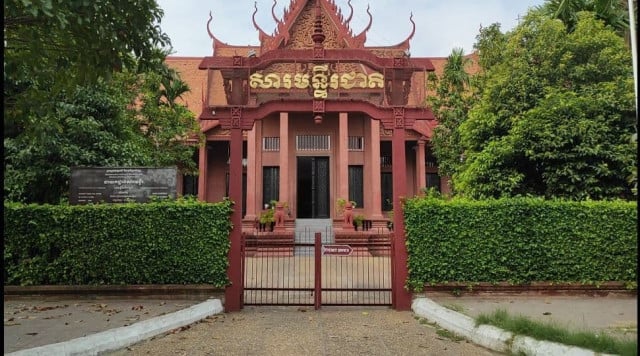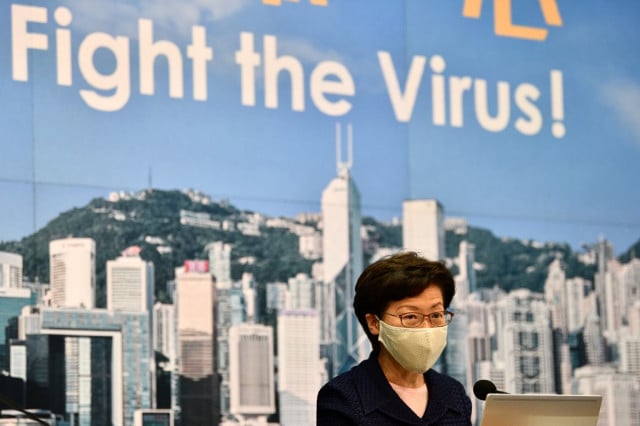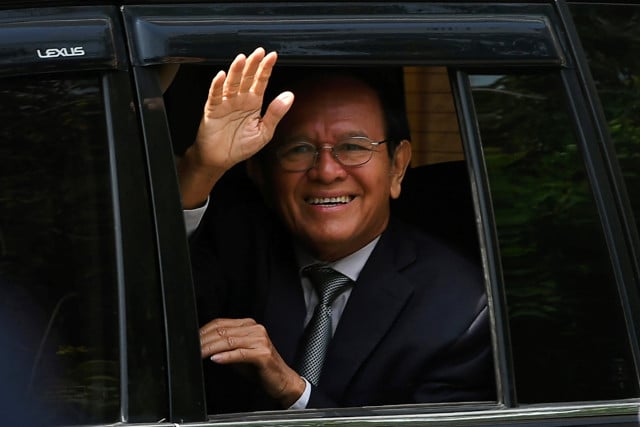Timeline of the National Museum of Cambodia

- Cambodianess
- April 12, 2021 11:04 AM
PHNOM PENH--The National Museum of Cambodia in collaboration with the French School of Asian Studies or in French: École française d'Extrême-Orient will organize the first virtual exhibition on April 13 to commemorate the 100th anniversary of the museum. During the exhibition period, some sculptures and their histories are to be displayed digitally. With the approval from the National Museum of Cambodia, and in contribution to the promotion of the value of Khmer cultural heritage, Cambodianess is pleased to share the "Timeline of the National Museum of Cambodia."
1905: Establishment of the Khmer Museum. The original collection consisted of works sent back from Saigon (Ho Chi Minh City) as well as works collected by the provinces’ Résidents (administrators). This collection was housed in the Silver Pagoda. From 1909 on, the works were displayed in a building constructed to the north of Wat Phnom. Cramped and ill-conceived, this first museum is criticized from the start.
1917: Albert Sarraut, governor-general of Indochina, appointed George Groslier, a painter born in Cambodia, to conduct a study on the “state of Cambodian arts.” George Groslier recommended a program for the "redevelopment of the arts," which included setting up a new museum in Cambodia along with an art school.
1920: The Albert Sarraut Museum (east wing) and the School of Cambodian Arts—located at the back in three wings that now shape the cloister of the current museum—were inaugurated on April 13. George Groslier designed, set up and managed the two institutions. The museum was placed under the authority of the École française d’Extrême-Orient (EFEO).
1923-43: Acquisitions increased: archaeological and royal collections, monastic objects, photographs, etc. North and south extensions were built. The museum gradually spread into the workshops of the School of Cambodian Arts, which therefore moved into a new building complex to the west (now the Royal University of Fine Arts).
1944-49: Éveline Porée-Maspéro and Pierre Dupont succeeded each other as museum curator. They were followed in turn by
Jacques Lagisquet and Solange Thierry. George Groslier died tragically in 1945.
1950-69: Jean Boisselier, curator from 1950 to 1956, embarked on an extensive renovation of the displays, which still is apparent today. Two years before Cambodia’s Independence, the museum, which had been renamed the National Museum of Cambodia, was placed under the authority of the Royal Government of Cambodia. Madeleine Giteau remained curator during the transition period and until 1966 when she was succeeded by Chea Thay Seng and later on Ly Vou Ong. In 1968, the structure of the central building was completely transformed: The basement was set up as the museum’s storage facility and a new floor was added to house a library and administrative offices.
1970: As the civil war intensified, provincial collections were brought to the museum.
1975-79: The Khmer Rouge regime. The museum closed its doors. Former museum curators Chea Thay Seng and Ly Vou Ong die in Tuol Sleng in 1976.
1979-91: Reopening of the museum renamed Museum of Art and Archeology on April 13, 1979. Kann Man, Ouk Chea and Ouk Sun Heng succeeded each other as museum director. Cooperation with the "socialist sisters nations."
1992-2020: The museum reverted to its name of the National Museum of Cambodia. Pich Keo, Khun Samen, Hab Touch, Oun Phal- line, Kong Vireak and Chhay Visoth succeeded each other as director of the museum. Major restoration campaigns were launched; workshops and laboratories for stone, metal, ceramic and painting conservation were set up; buildings were progressively rehabilitated and new rooms added. Major Khmer artefacts were returned to the museum. The museum’s masterpieces now regularly feature in international exhibitions throughout the world. The number of visitors to the museum steadily increases. The museum closed its doors from March to June 2020 due to the Coronavirus Disease 2019 (COVID-19) pandemic.
2020: The museum tries to celebrate its centennial anniversary, however, it was delayed because of the Covid-19 outbreak.
2021: The museum celebrates its centennial plus one anniversary online on April 13, 2021
Text provided by the National Museum of Cambodia















